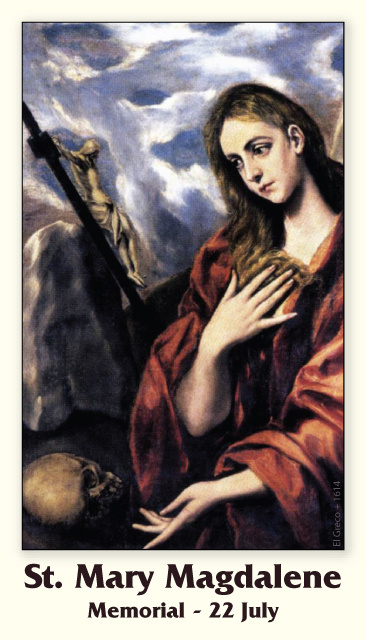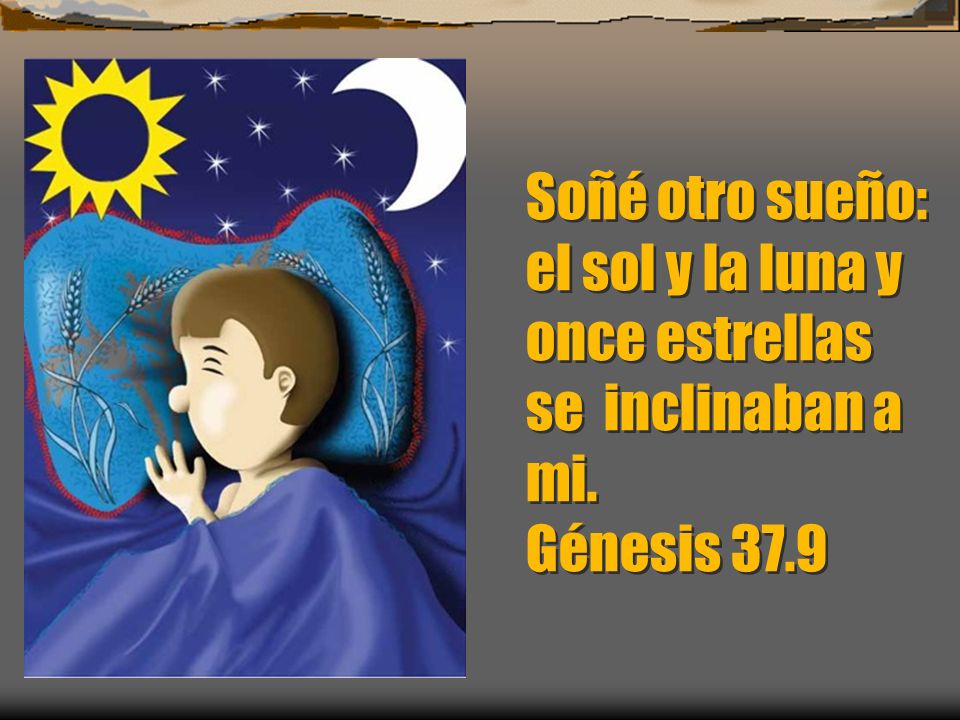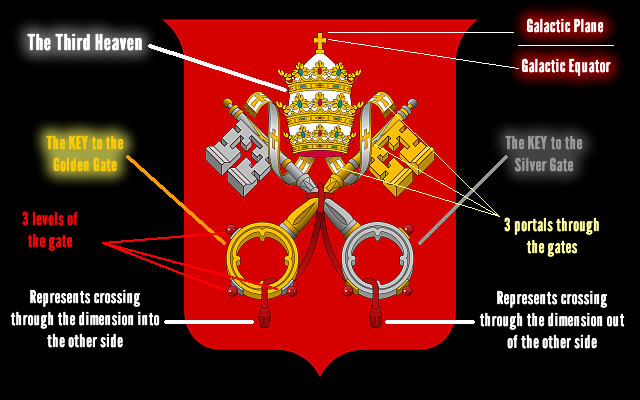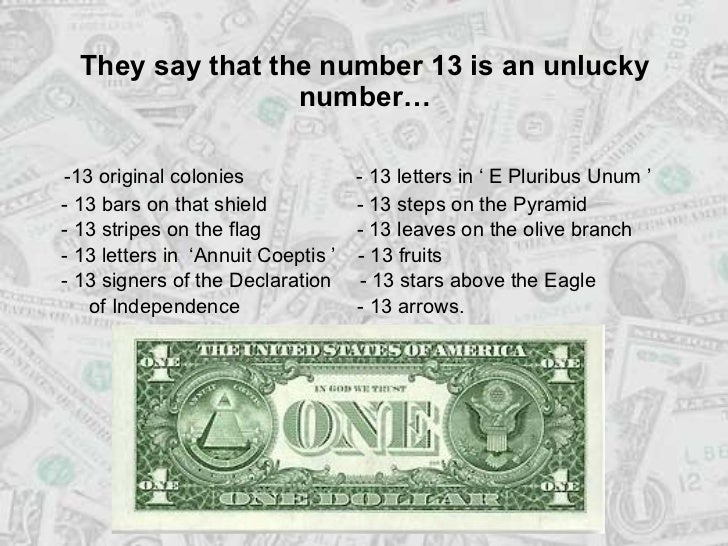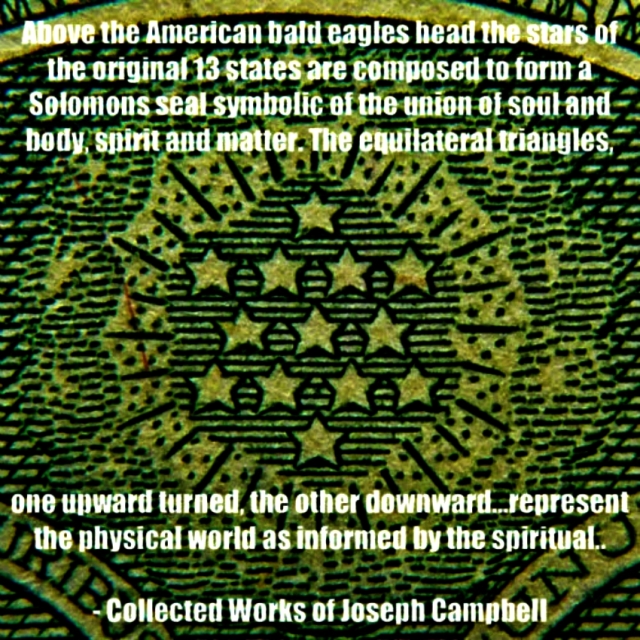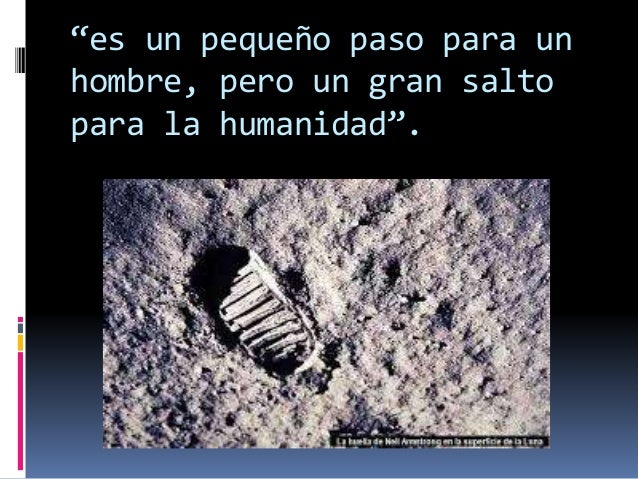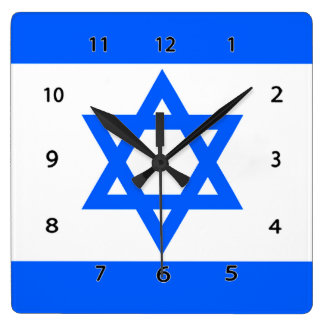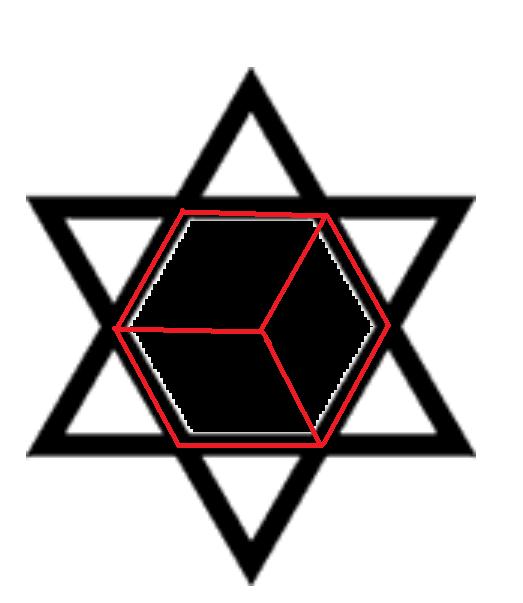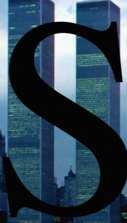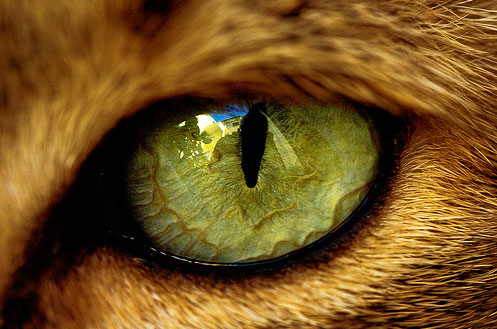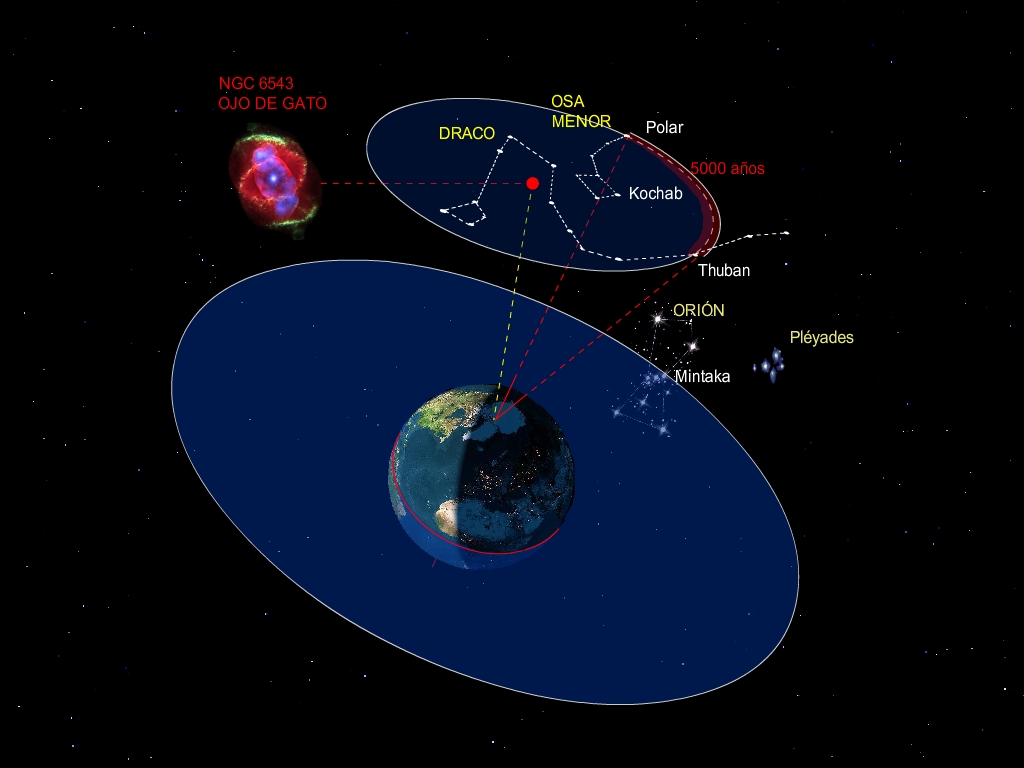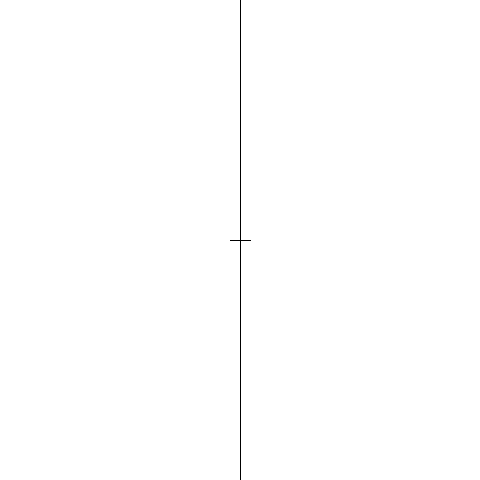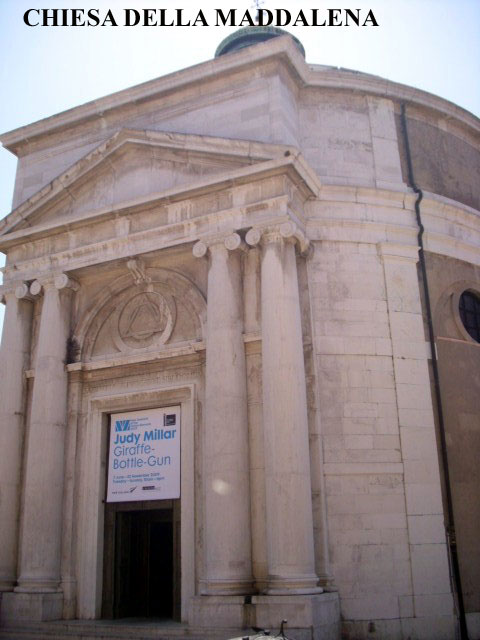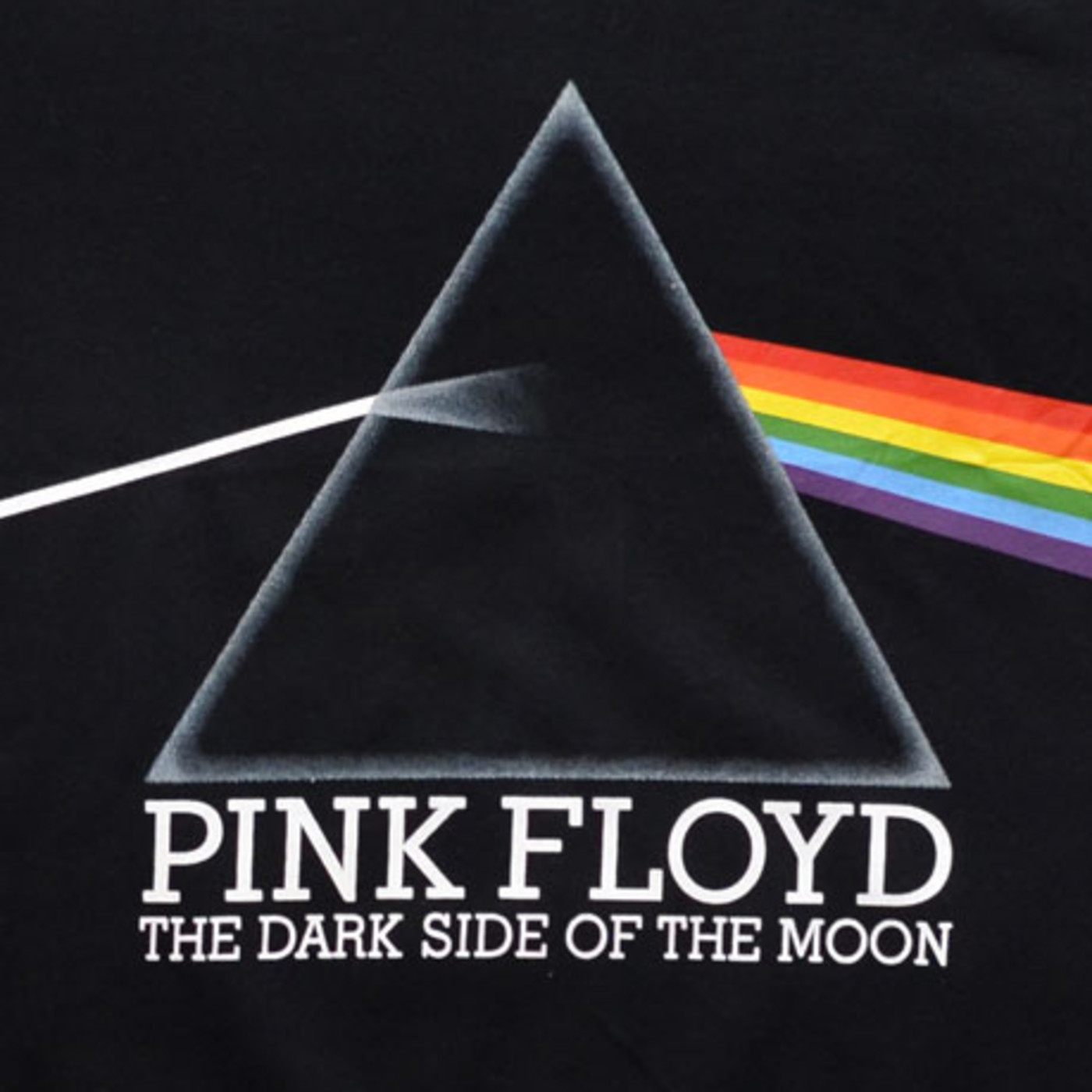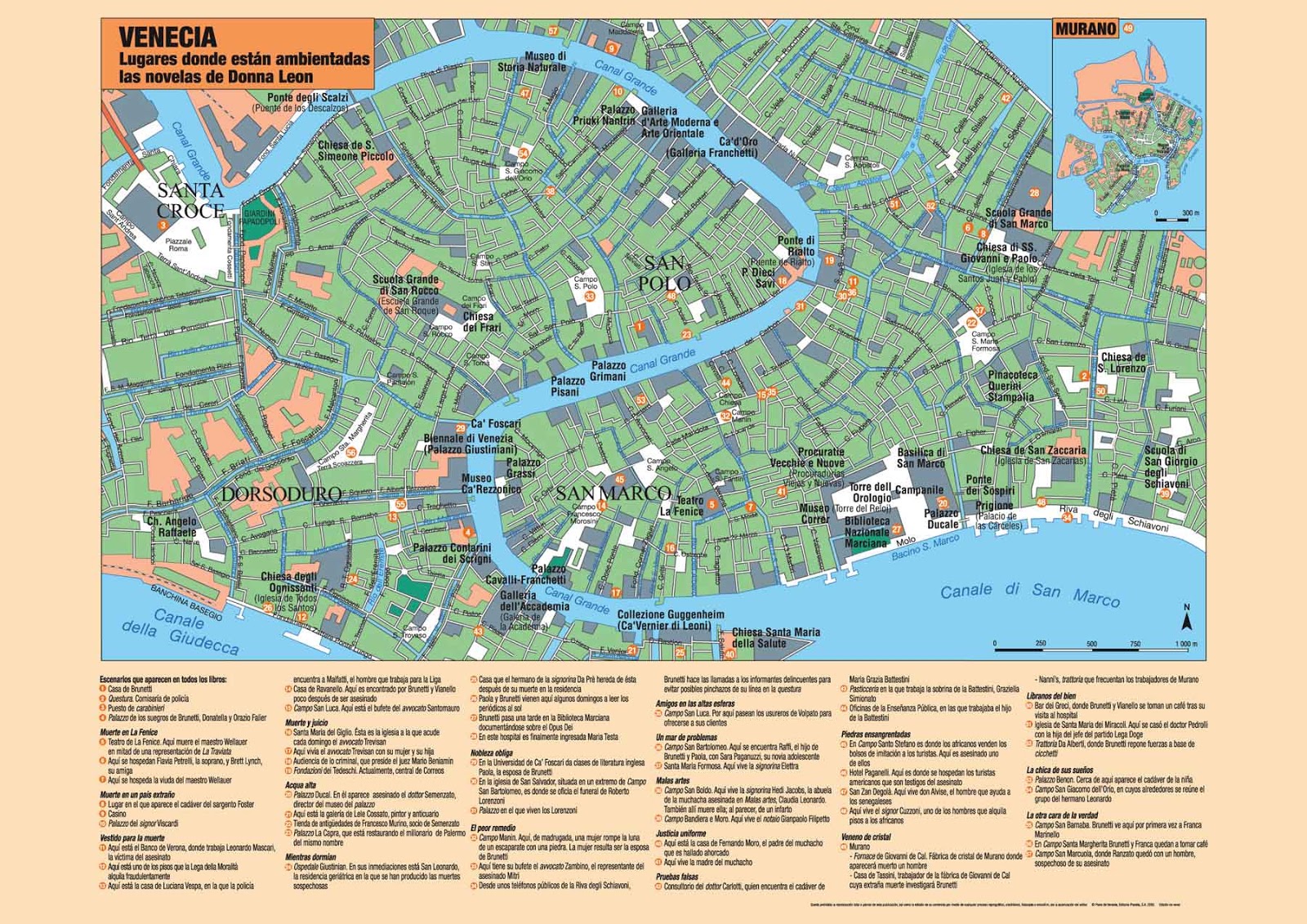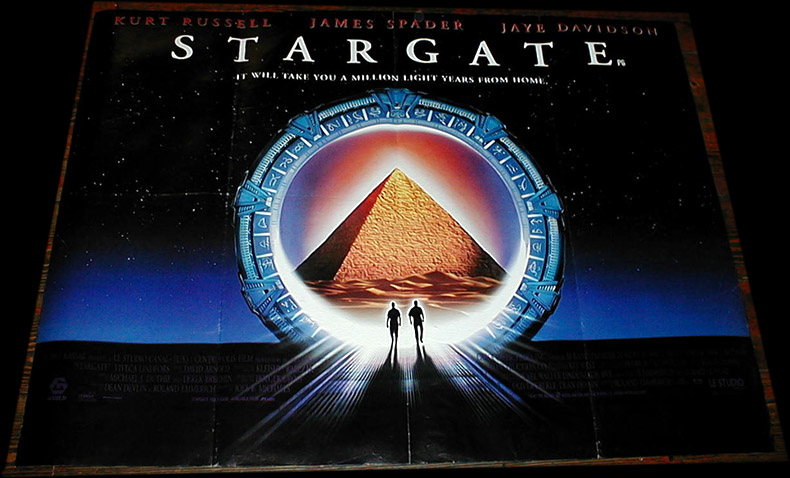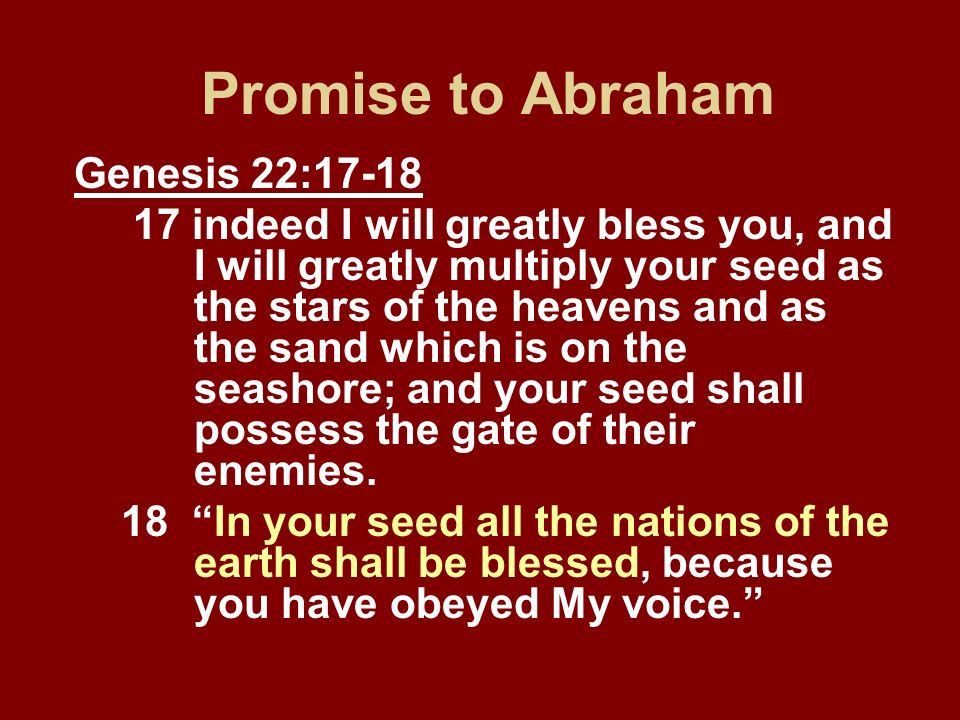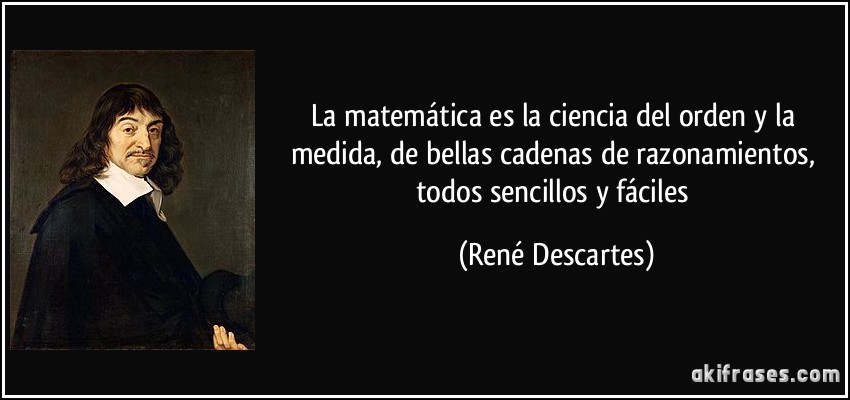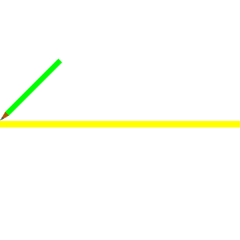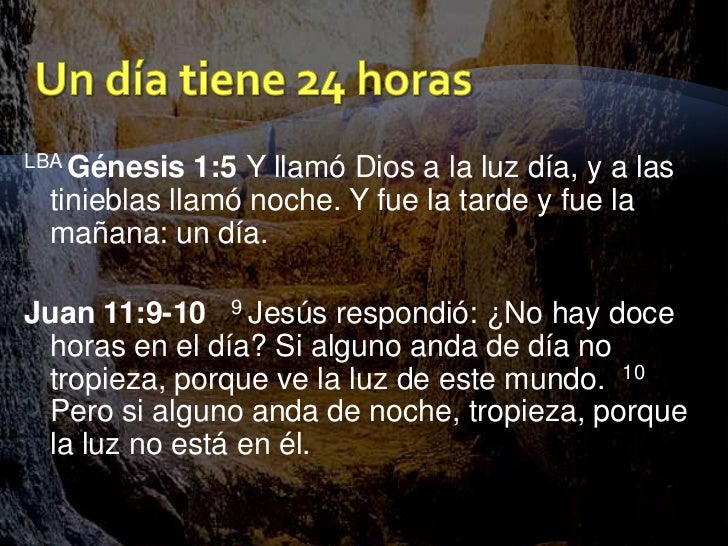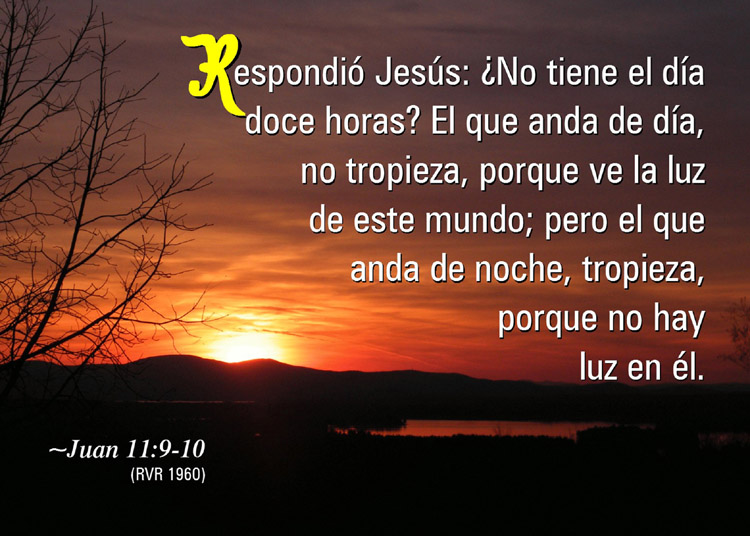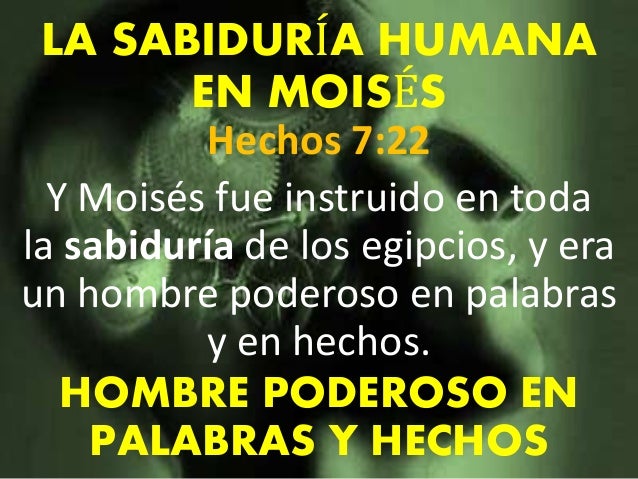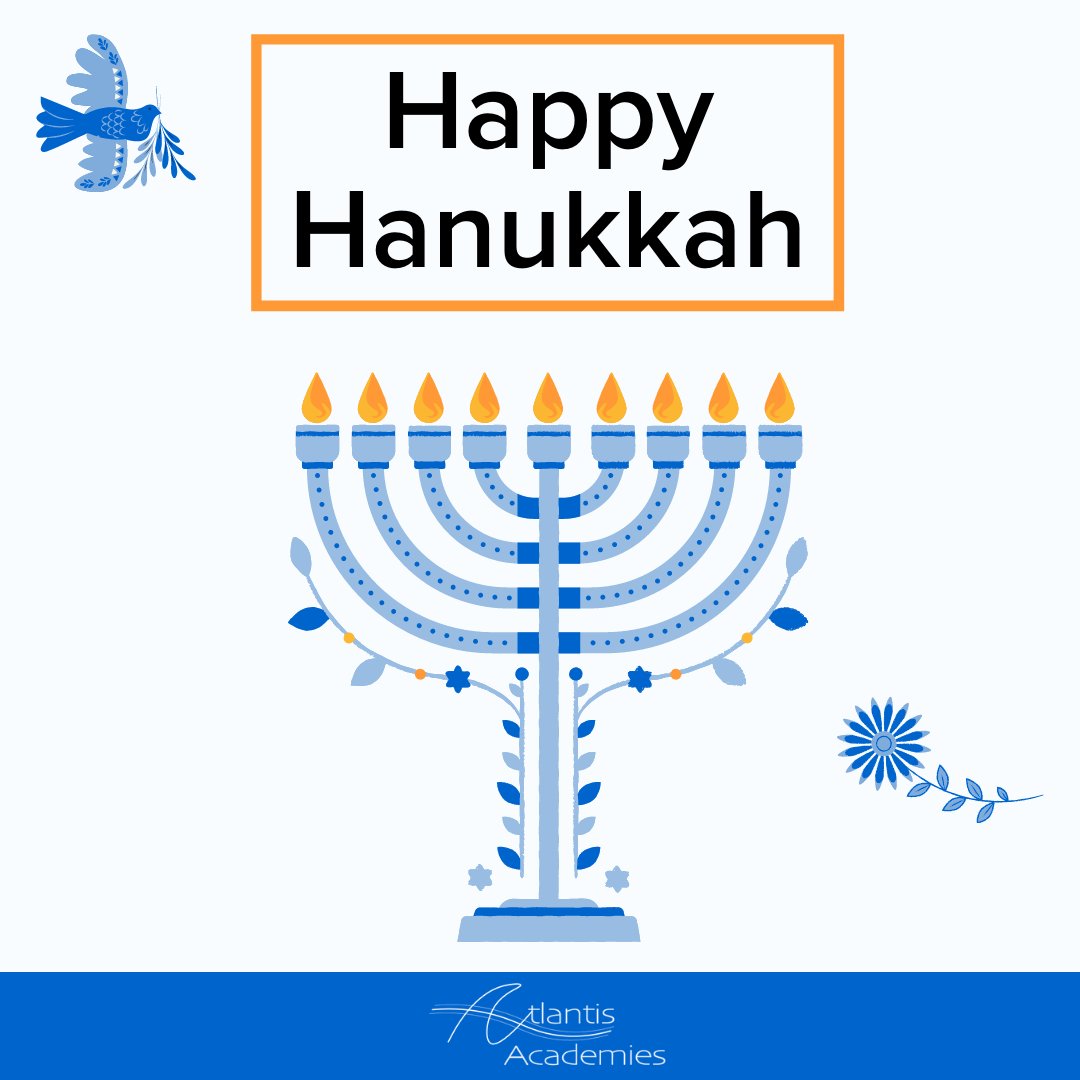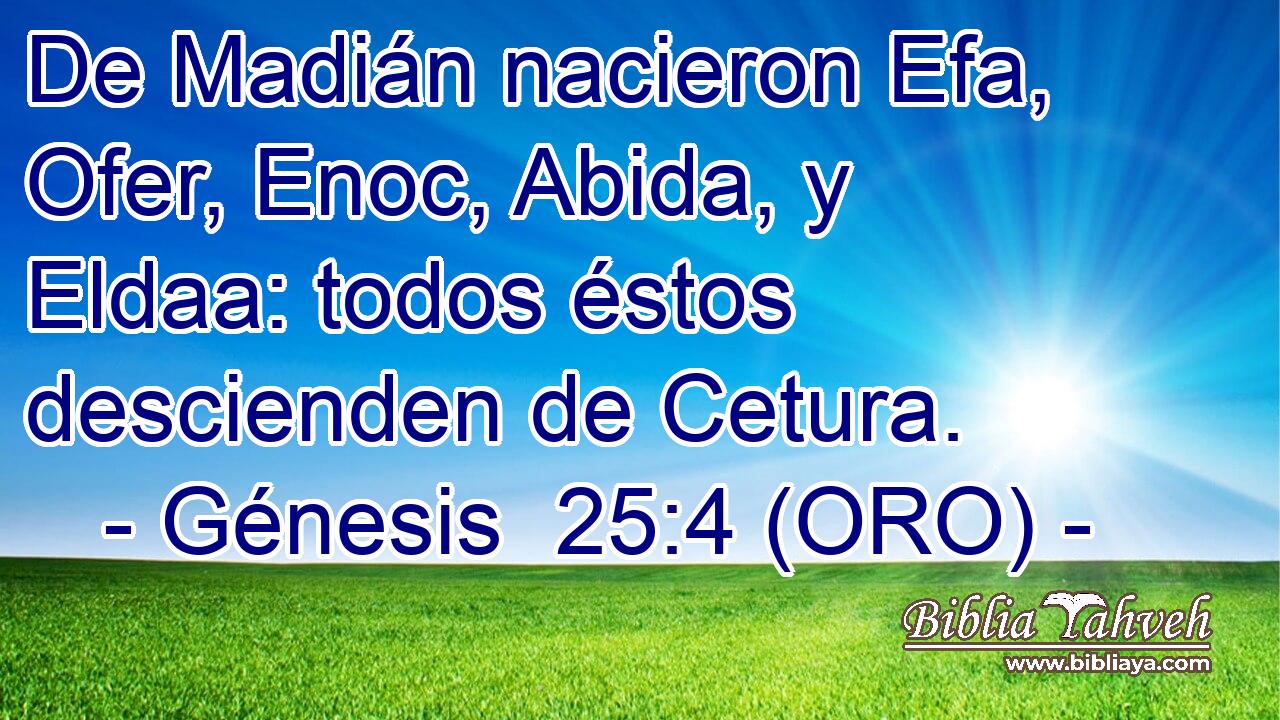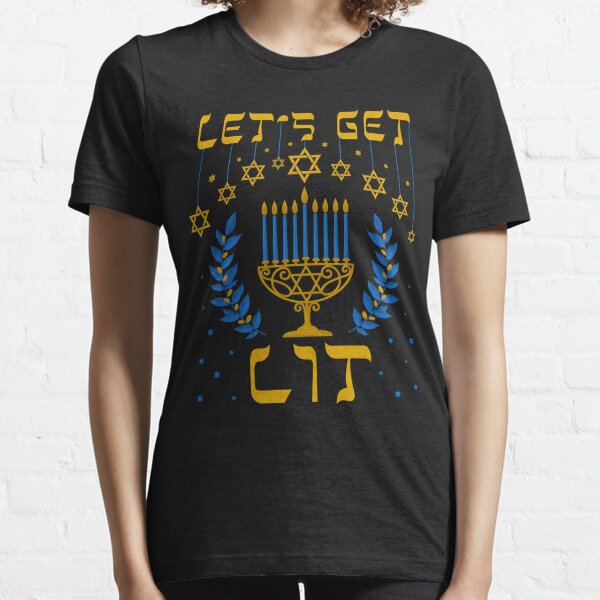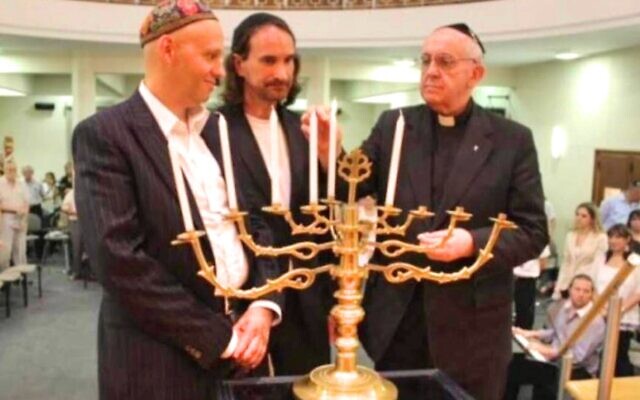|
|
General: JUAN 10:22-¿PORQUE JANUKAH TIENE REFERENCIA A 9 MESES LUNARES EXACTOS?
Scegli un’altra bacheca |
|
Rispondi |
Messaggio 1 di 81 di questo argomento |
|
JESUCRISTO SE EXPRESA EN CLAVE CON CODIGOS EGIPTOLOGICOS Y MASONICOS
Juan 7
1. Después de estas cosas, andaba Jesús en Galilea; pues no quería andar en Judea, porque los judíos procuraban matarle.
2. Estaba cerca la fiesta de los judíos, la de los tabernáculos;
3. y le dijeron sus hermanos: Sal de aquí, y vete a Judea, para que también tus discípulos vean las obras que haces.
4. Porque ninguno que procura darse a conocer hace algo en secreto. Si estas cosas haces, manifiéstate al mundo.
5. Porque ni aun sus hermanos creían en él.
6. Entonces Jesús les dijo: Mi tiempo aún no ha llegado, mas vuestro tiempo siempre está presto.
7. No puede el mundo aborreceros a vosotros; mas a mí me aborrece, porque yo testifico de él, que sus obras son malas.
8. Subid vosotros a la fiesta; yo no subo todavía a esa fiesta, porque mi tiempo aún no se ha cumplido.
9. Y habiéndoles dicho esto, se quedó en Galilea.
10. Pero después que sus hermanos habían subido, entonces él también subió a la fiesta, no abiertamente, sino como en secreto.
11. Y le buscaban los judíos en la fiesta, y decían: ¿Dónde está aquél?
12. Y había gran murmullo acerca de él entre la multitud, pues unos decían: Es bueno; pero otros decían: No, sino que engaña al pueblo.
13. Pero ninguno hablaba abiertamente de él, por miedo a los judíos.
14. Mas a la mitad de la fiesta subió Jesús al templo, y enseñaba.
15. Y se maravillaban los judíos, diciendo: ¿Cómo sabe éste letras, sin haber estudiado?
16. Jesús les respondió y dijo: Mi doctrina no es mía, sino de aquel que me envió.
17. El que quiera hacer la voluntad de Dios, conocerá si la doctrina es de Dios, o si yo hablo por mi propia cuenta.
18. El que habla por su propia cuenta, su propia gloria busca; pero el que busca la gloria del que le envió, éste es verdadero, y no hay en él injusticia.
19. ¿No os dio Moisés la ley, y ninguno de vosotros cumple la ley? ¿Por qué procuráis matarme?
20. Respondió la multitud y dijo: Demonio tienes; ¿quién procura matarte?
21. Jesús respondió y les dijo: Una obra hice, y todos os maravilláis.
22. Por cierto, Moisés os dio la circuncisión (no porque sea de Moisés, sino de los padres); y en el día de reposo circuncidáis al hombre.
23. Si recibe el hombre la circuncisión en el día de reposo, para que la ley de Moisés no sea quebrantada, ¿os enojáis conmigo porque en el día de reposo sané completamente a un hombre?
24. No juzguéis según las apariencias, sino juzgad con justo juicio.
25. Decían entonces unos de Jerusalén: ¿No es éste a quien buscan para matarle?
26. Pues mirad, habla públicamente, y no le dicen nada. ¿Habrán reconocido en verdad los gobernantes que éste es el Cristo?
27. Pero éste, sabemos de dónde es; mas cuando venga el Cristo, nadie sabrá de dónde sea.
28. Jesús entonces, enseñando en el templo, alzó la voz y dijo: A mí me conocéis, y sabéis de dónde soy; y no he venido de mí mismo, pero el que me envió es verdadero, a quien vosotros no conocéis.
29. Pero yo le conozco, porque de él procedo, y él me envió.
30. Entonces procuraban prenderle; pero ninguno le echó mano, porque aún no había llegado su hora.
31. Y muchos de la multitud creyeron en él, y decían: El Cristo, cuando venga, ¿hará más señales que las que éste hace?
32. Los fariseos oyeron a la gente que murmuraba de él estas cosas; y los principales sacerdotes y los fariseos enviaron alguaciles para que le prendiesen.
33. Entonces Jesús dijo: Todavía un poco de tiempo estaré con vosotros, e iré al que me envió.
34. Me buscaréis, y no me hallaréis; y a donde yo estaré, vosotros no podréis venir.
35. Entonces los judíos dijeron entre sí: ¿Adónde se irá éste, que no le hallemos? ¿Se irá a los dispersos entre los griegos, y enseñará a los griegos?
36. ¿Qué significa esto que dijo: Me buscaréis, y no me hallaréis; y a donde yo estaré, vosotros no podréis venir?
37. En el último y gran día de la fiesta, Jesús se puso en pie y alzó la voz, diciendo: Si alguno tiene sed, venga a mí y beba.
38. El que cree en mí, como dice la Escritura, de su interior correrán ríos de agua viva. (EL ultimo dia, es una referencia a OSHANAH RABBAH, el septimo dia de la FIESTA DE LOS TABERNACULOS, OSEA EL 21 DE TISHRI)
39. Esto dijo del Espíritu que habían de recibir los que creyesen en él; pues aún no había venido el Espíritu Santo, porque Jesús no había sido aún glorificado.
40. Entonces algunos de la multitud, oyendo estas palabras, decían: Verdaderamente éste es el profeta.
41. Otros decían: Este es el Cristo. Pero algunos decían: ¿De Galilea ha de venir el Cristo?
42. ¿No dice la Escritura que del linaje de David, y de la aldea de Belén, de donde era David, ha de venir el Cristo?
43. Hubo entonces disensión entre la gente a causa de él.
44. Y algunos de ellos querían prenderle; pero ninguno le echó mano.
45. Los alguaciles vinieron a los principales sacerdotes y a los fariseos; y éstos les dijeron: ¿Por qué no le habéis traído?
46. Los alguaciles respondieron: ¡Jamás hombre alguno ha hablado como este hombre!
47. Entonces los fariseos les respondieron: ¿También vosotros habéis sido engañados?
48. ¿Acaso ha creído en él alguno de los gobernantes, o de los fariseos?
49. Mas esta gente que no sabe la ley, maldita es.
50. Les dijo Nicodemo, el que vino a él de noche, el cual era uno de ellos:
51. ¿Juzga acaso nuestra ley a un hombre si primero no le oye, y sabe lo que ha hecho?
52. Respondieron y le dijeron: ¿Eres tú también galileo? Escudriña y ve que de Galilea nunca se ha levantado profeta.
53. Cada uno se fue a su casa;
Juan 8
1. y Jesús se fue al monte de los Olivos.
2. Y por la mañana volvió al templo, y todo el pueblo vino a él; y sentado él, les enseñaba. (AL DIA SIGUIENTE DEL SEPTIMO DIA DE TABERNACULOS, ES EL OCTAVO, OSEA EL 22/7 O 22 DE TISHRI O SEPTIMO MES HEBREO, EN EL DIA QUE LOS JUDIOS LEEN EL SALMO 119, OSEA LA FESTIVIDAD DE SIMCHAT TORAH O RECOCIJO EN LA TORAH. ES EN ESTE MARCO ADONDE LOS FARISEOS LE TIRAN PIEDRAS A LA RAMERA)
3. Entonces los escribas y los fariseos le trajeron una mujer sorprendida en adulterio; y poniéndola en medio,
4. le dijeron: Maestro, esta mujer ha sido sorprendida en el acto mismo de adulterio.
5. Y en la ley nos mandó Moisés apedrear a tales mujeres. Tú, pues, ¿qué dices?
6. Mas esto decían tentándole, para poder acusarle. Pero Jesús, inclinado hacia el suelo, escribía en tierra con el dedo.
Juan 9
1. Al pasar Jesús, vio a un hombre ciego de nacimiento.
2. Y le preguntaron sus discípulos, diciendo: Rabí, ¿quién pecó, éste o sus padres, para que haya nacido ciego?
3. Respondió Jesús: No es que pecó éste, ni sus padres, sino para que las obras de Dios se manifiesten en él. (OBRAS ES OPUS EN LATIN. ¿HAY UNA RELACION CON CANOPUS EN EL MARCO A JUAN 10, EN EL CONTEXTO AL LOBO / PERRO / SIRIO / CAN MAYOR?)
4. Me es necesario hacer las obras del que me envió, entre tanto que el día dura; la noche viene, cuando nadie puede trabajar.
5. Entre tanto que estoy en el mundo, luz soy del mundo.
6. Dicho esto, escupió en tierra, e hizo lodo con la saliva, y untó con el lodo los ojos del ciego,
7. y le dijo: Ve a lavarte en el estanque de Siloé (que traducido es, Enviado). Fue entonces, y se lavó, y regresó viendo.
8. Entonces los vecinos, y los que antes le habían visto que era ciego, decían: ¿No es éste el que se sentaba y mendigaba?
9. Unos decían: El es; y otros: A él se parece. El decía: Yo soy.
10. Y le dijeron: ¿Cómo te fueron abiertos los ojos?
11. Respondió él y dijo: Aquel hombre que se llama Jesús hizo lodo, me untó los ojos, y me dijo: Ve al Siloé, y lávate; y fui, y me lavé, y recibí la vista. (NOTEN EL NEXO 9:11, CON LA RAMERA DE JUAN 8, EN EL CONTEXTO A LA TIERRA. ESTE SIGUE SIENDO EL 22/7 O 22 DEL SEPTIMO MES HEBREO)
12. Entonces le dijeron: ¿Dónde está él? El dijo: No sé.
13. Llevaron ante los fariseos al que había sido ciego.
14. Y era día de reposo cuando Jesús había hecho el lodo, y le había abierto los ojos. (ESTO CONFIRMA QUE ERA 22/7, PORQUE ERA DIA DE REPOSO LUNAR QUE SON LOS 8, 15, 22 Y 29)
15. Volvieron, pues, a preguntarle también los fariseos cómo había recibido la vista. El les dijo: Me puso lodo sobre los ojos, y me lavé, y veo.
16. Entonces algunos de los fariseos decían: Ese hombre no procede de Dios, porque no guarda el día de reposo. Otros decían: ¿Cómo puede un hombre pecador hacer estas señales? Y había disensión entre ellos.
17. Entonces volvieron a decirle al ciego: ¿Qué dices tú del que te abrió los ojos? Y él dijo: Que es profeta.
18. Pero los judíos no creían que él había sido ciego, y que había recibido la vista, hasta que llamaron a los padres del que había recibido la vista,
19. y les preguntaron, diciendo: ¿Es éste vuestro hijo, el que vosotros decís que nació ciego? ¿Cómo, pues, ve ahora?
20. Sus padres respondieron y les dijeron: Sabemos que éste es nuestro hijo, y que nació ciego;
21. pero cómo vea ahora, no lo sabemos; o quién le haya abierto los ojos, nosotros tampoco lo sabemos; edad tiene, preguntadle a él; él hablará por sí mismo.
22. Esto dijeron sus padres, porque tenían miedo de los judíos, por cuanto los judíos ya habían acordado que si alguno confesase que Jesús era el Mesías, fuera expulsado de la sinagoga.
23. Por eso dijeron sus padres: Edad tiene, preguntadle a él.
24. Entonces volvieron a llamar al hombre que había sido ciego, y le dijeron: Da gloria a Dios; nosotros sabemos que ese hombre es pecador.
25. Entonces él respondió y dijo: Si es pecador, no lo sé; una cosa sé, que habiendo yo sido ciego, ahora veo.
26. Le volvieron a decir: ¿Qué te hizo? ¿Cómo te abrió los ojos?
27. El les respondió: Ya os lo he dicho, y no habéis querido oir; ¿por qué lo queréis oír otra vez? ¿Queréis también vosotros haceros sus discípulos?
28. Y le injuriaron, y dijeron: Tú eres su discípulo; pero nosotros, discípulos de Moisés somos.
29. Nosotros sabemos que Dios ha hablado a Moisés; pero respecto a ése, no sabemos de dónde sea.
30. Respondió el hombre, y les dijo: Pues esto es lo maravilloso, que vosotros no sepáis de dónde sea, y a mí me abrió los ojos.
31. Y sabemos que Dios no oye a los pecadores; pero si alguno es temeroso de Dios, y hace su voluntad, a ése oye.
32. Desde el principio no se ha oído decir que alguno abriese los ojos a uno que nació ciego.
33. Si éste no viniera de Dios, nada podría hacer.
Juan 10
1. De cierto, de cierto os digo: El que no entra por la puerta en el redil de las ovejas, sino que sube por otra parte, ése es ladrón y salteador. (CRISTO SE EXPRESA FUERTE MENTE EN CLAVE. LA OVEJA ES RAQUEL, LA MADRE DE BENJAMIN SEGUN GENESIS 35. RAQUEL SIGNIFICA OVEJA)
2. Mas el que entra por la puerta, el pastor de las ovejas es. (PASTOR / ISHTAR / HATHOR EN UN MARCO EGIPTOLOGICO. HATHOR ERA LA DIVINIDAD EN UN CONTEXTO FEMENINO Y TENIA FUERTE RELACION CON LA PRECESION DE LOS EQUINOCCIOS, EN EL CONTEXTO AL NACIMIENTO DE UN BEBE. EL TEMPLO DE DENDERA ESTABA ORIENTADO HACIA EL NORTE CON REFERENCIA A LA CONSTELACION DEL DRAGON, OSEA APOCALIPSIS 12)
3. A éste abre el portero, y las ovejas oyen su voz; y a sus ovejas llama por nombre, y las saca.
4. Y cuando ha sacado fuera todas las propias, va delante de ellas; y las ovejas le siguen, porque conocen su voz.
5. Mas al extraño no seguirán, sino huirán de él, porque no conocen la voz de los extraños.
6. Esta alegoría les dijo Jesús; pero ellos no entendieron qué era lo que les decía.
7. Volvió, pues, Jesús a decirles: De cierto, de cierto os digo: Yo soy la puerta de las ovejas.
8. Todos los que antes de mí vinieron, ladrones son y salteadores; pero no los oyeron las ovejas.
9. Yo soy la puerta; el que por mí entrare, será salvo; y entrará, y saldrá, y hallará pastos.
10. El ladrón no viene sino para hurtar y matar y destruir; yo he venido para que tengan vida, y para que la tengan en abundancia.
11. Yo soy el buen pastor; el buen pastor su vida da por las ovejas.
12. Mas el asalariado, y que no es el pastor, de quien no son propias las ovejas, ve venir al lobo y deja las ovejas y huye, y el lobo arrebata las ovejas y las dispersa. (Aqui CRISTO esta haciendo una analogia al NACIMIENTO DE BENJAMIN, EL LOBO, CUANDO MUERE RAQUEL SEGUN GENESIS 35. LA REFERENCIA AL ASALARIADO ES UN NEXO CON LA SAL, OSEA LA ALQUIMIA, EL GRIAL. EN EL TEMPLO DE DENDERA, ESTABA DISEÑADO CON LA PUERTA HACIA EL ESTE CON REFERENCIA A LA CONSTELACION DE SIRIO / PERRO/ LOBO / CHACAL / ISIS.)
13. Así que el asalariado huye, porque es asalariado, y no le importan las ovejas. (ES OBVIA LA REFERENCIA AL NACIMIENTO DE BENJAMIN CUANDO MUERE RAQUEL. CRISTO SE EXPRESA MUY EN FORMA ESOTERICA. LA EUCARISTIA CATOLICA ESTA DISEÑADA BAJO ESTE PATRON ALQUIMICO. ¿SABEN LOS TEOLOGOS CATOLICOS QUE LA VIRGEN ES MARIA LA MAGDALENA?)
14. Yo soy el buen pastor; y conozco mis ovejas, y las mías me conocen,
15. así como el Padre me conoce, y yo conozco al Padre; y pongo mi vida por las ovejas.
16. También tengo otras ovejas que no son de este redil; aquéllas también debo traer, y oirán mi voz; y habrá un rebaño, y un pastor.
17. Por eso me ama el Padre, porque yo pongo mi vida, para volverla a tomar.
18. Nadie me la quita, sino que yo de mí mismo la pongo. Tengo poder para ponerla, y tengo poder para volverla a tomar. Este mandamiento recibí de mi Padre.
19. Volvió a haber disensión entre los judíos por estas palabras.
20. Muchos de ellos decían: Demonio tiene, y está fuera de sí; ¿por qué le oís? (SAL-O-MON / MON / MONKEY / MONEY / MONDAY / GRAN PIRAMIDE DE GIZE DISEÑADA EN FUNCION A LA ALQUIMIA EN EL CONTEXTO AL PLANETA TIERRA Y LA LUNA)
21. Decían otros: Estas palabras no son de endemoniado. ¿Puede acaso el demonio abrir los ojos de los ciegos?
22. Celebrábase en Jerusalén la fiesta de la dedicación. Era invierno, (LA FIESTA DE JANUKAH, OSEA EL 24 DEL NOVENO MES HEBREO, QUE DURA 7 DIAS, EN FUNCION A 9 MESES LUNARES EXACTOS. ¿DE QUE CREE USTED QUE ESTA HABLANDO EL SEÑOR? ES OBVIO QUE DEL SANTO GRIAL)
23. y Jesús andaba en el templo por el pórtico de Salomón.
24. Y le rodearon los judíos y le dijeron: ¿Hasta cuándo nos turbarás el alma? Si tú eres el Cristo, dínoslo abiertamente.
|
|
|
|
Rispondi |
Messaggio 67 di 81 di questo argomento |
|
|
|
|
| Reply |
Message 35 of 35 on the subject |
|
Juan 10Nueva Versión Internacional (NVI)
Jesús, el buen pastor
10 »Ciertamente les aseguro que el que no entra por la puerta al redil de las ovejas, sino que trepa y se mete por otro lado, es un ladrón y un bandido. 2 El que entra por la puerta es el pastor de las ovejas. 3 El portero le abre la puerta, y las ovejas oyen su voz. Llama por nombre a las ovejas y las saca del redil. 4 Cuando ya ha sacado a todas las que son suyas, va delante de ellas, y las ovejas lo siguen porque reconocen su voz. 5 Pero a un desconocido jamás lo siguen; más bien, huyen de él porque no reconocen voces extrañas».
6 Jesús les puso este ejemplo, pero ellos no captaron el sentido de sus palabras. 7 Por eso volvió a decirles: «Ciertamente les aseguro que yo soy la puerta de las ovejas. 8 Todos los que vinieron antes de mí eran unos ladrones y unos bandidos, pero las ovejas no les hicieron caso. 9 Yo soy la puerta; el que entre por esta puerta, que soy yo, será salvo. Se moverá con entera libertad, y hallará pastos. 10 El ladrón no viene más que a robar, matar y destruir; yo he venido para que tengan vida, y la tengan en abundancia.
11 »Yo soy el buen pastor. El buen pastor da su vida por las ovejas. 12 El asalariado no es el pastor, y a él no le pertenecen las ovejas. Cuando ve que el lobo se acerca, abandona las ovejas y huye; entonces el lobo ataca al rebaño y lo dispersa. 13 Y ese hombre huye porque, siendo asalariado, no le importan las ovejas.
14 »Yo soy el buen pastor; conozco a mis ovejas, y ellas me conocen a mí, 15 así como el Padre me conoce a mí y yo lo conozco a él, y doy mi vida por las ovejas. 16 Tengo otras ovejas que no son de este redil, y también a ellas debo traerlas. Así ellas escucharán mi voz, y habrá un solo rebaño y un solo pastor. 17 Por eso me ama el Padre: porque entrego mi vida para volver a recibirla. 18 Nadie me la arrebata, sino que yo la entrego por mi propia voluntad. Tengo autoridad para entregarla, y tengo también autoridad para volver a recibirla. Este es el mandamiento que recibí de mi Padre».
19 De nuevo las palabras de Jesús fueron motivo de disensión entre los judíos. 20 Muchos de ellos decían: «Está endemoniado y loco de remate. ¿Para qué hacerle caso?» 21 Pero otros opinaban: «Estas palabras no son de un endemoniado. ¿Puede acaso un demonio abrirles los ojos a los ciegos?»
22. Celebrábase en Jerusalén la fiesta de la dedicación. Era invierno, (LA FIESTA DE JANUKAH, OSEA EL 24 DEL NOVENO MES HEBREO, QUE DURA 7 DIAS, EN FUNCION A 9 MESES LUNARES EXACTOS. ¿DE QUE CREE USTED QUE ESTA HABLANDO EL SEÑOR? ES OBVIO QUE DEL SANTO GRIAL)
23. y Jesús andaba en el templo por el pórtico de Salomón.
24. Y le rodearon los judíos y le dijeron: ¿Hasta cuándo nos turbarás el alma? Si tú eres el Cristo, dínoslo abiertamente.
Génesis
35:1 Dijo Dios a Jacob: Levántate y sube a Bet-el, y quédate allí; y haz allí un altar al Dios que te apareció cuando huías de tu hermano Esaú.
35:2 Entonces Jacob dijo a su familia y a todos los que con él estaban: Quitad los dioses ajenos que hay entre vosotros, y limpiaos, y mudad vuestros vestidos.
35:3 Y levantémonos, y subamos a Bet-el; y haré allí altar al Dios que me respondió en el día de mi angustia, y ha estado conmigo en el camino que he andado.
35:4 Así dieron a Jacob todos los dioses ajenos que había en poder de ellos, y los zarcillos que estaban en sus orejas; y Jacob los escondió debajo de una encina que estaba junto a Siquem.
35:5 Y salieron, y el terror de Dios estuvo sobre las ciudades que había en sus alrededores, y no persiguieron a los hijos de Jacob.
35:6 Y llegó Jacob a Luz, que está en tierra de Canaán (esta es Bet-el), él y todo el pueblo que con él estaba.
35:7 Y edificó allí un altar, y llamó al lugar El-bet-el, porque allí le había aparecido Dios, cuando huía de su hermano.
35:8 Entonces murió Débora, ama de Rebeca, y fue sepultada al pie de Bet-el, debajo de una encina, la cual fue llamada Alón-bacut.
35:9 Apareció otra vez Dios a Jacob, cuando había vuelto de Padan-aram, y le bendijo.
35:10 Y le dijo Dios: Tu nombre es Jacob; no se llamará más tu nombre Jacob, sino Israel será tu nombre; y llamó su nombre Israel.
35:11 También le dijo Dios: Yo soy el Dios omnipotente: crece y multiplícate; una nación y conjunto de naciones procederán de ti, y reyes saldrán de tus lomos.
35:12 La tierra que he dado a Abraham y a Isaac, la daré a ti, y a tu descendencia después de ti daré la tierra.
35:13 Y se fue de él Dios, del lugar en donde había hablado con él.
35:14 Y Jacob erigió una señal en el lugar donde había hablado con él, una señal de piedra, y derramó sobre ella libación, y echó sobre ella aceite.
35:15 Y llamó Jacob el nombre de aquel lugar donde Dios había hablado con él, Bet-el.
35:16 Después partieron de Bet-el; y había aún como media legua de tierra para llegar a Efrata, cuando dio a luz Raquel, y hubo trabajo en su parto. (RAQUEL SIGNIFICA OVEJA. "EL PASTOR", TIENE OBVIAMENTE UN MARCO SEXUAL)
35:17 Y aconteció, como había trabajo en su parto, que le dijo la partera: No temas, que también tendrás este hijo.
35:18 Y aconteció que al salírsele el alma (pues murió), llamó su nombre Benoni; mas su padre lo llamó Benjamín.
35:19 Así murió Raquel, y fue sepultada en el camino de Efrata, la cual es Belén. (EL PATRON SIRIO, TIENE ESTA CONNOTACION, OSEA LA ESTRELLA DE BETHLEHEN, OSEA UNA REFERENCIA A RAQUEL, LA ESPOSA AMADA DE JACOB, MADRE DE BENJAMIN. AQUI TIENE ORIGEN EL MITO DE LA LUNA LLENA Y EL LOBO)
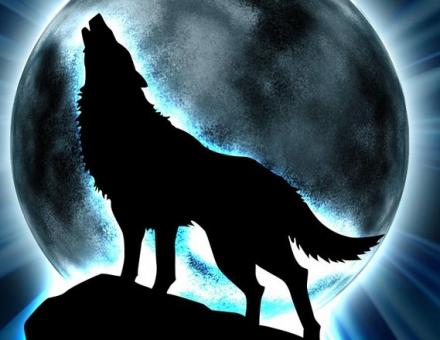 Génesis 49:27: Benjamín es LOBO arrebatador; A la mañana comerá la presa, Y a la tarde repartirá los despojos.
35:20 Y levantó Jacob un pilar sobre su sepultura; esta es la señal de la sepultura de Raquel hasta hoy.
35:20 Y levantó Jacob un pilar sobre su sepultura; esta es la señal de la sepultura de Raquel hasta hoy.
35:21 Y salió Israel, y plantó su tienda más allá de Migdal-edar. (ALLI CLARAMENTE ESTA EL NEXO CON LA TORRE. INCLUSO EN EL MARCO A GENESIS 37, AL SUEÑO DE JOSE ESPECIFICAMENTE, JACOB ES EL SOL Y RAQUEL, LA LUNA, DANDOLE AL ESPACIO/TIEMPO CLARAMENTE UN MARCO SEXUAL. TORRE/MIGDAL/MAGDALA/BABILONIA/ PUERTA DE DIOS/ PORTAL ESPACIO/TIEMPO)
|
LLAVE DE ORO Y DE PLATA AL IGUAL QUE LA MANZANA
SOL/ORO/JACOB Y PLATA/LUNA/RAQUEL
CANAN / CAN (LOBA ROMANA) / VATI-CAN-O
|
|
|
|
|
|
|
|
|
|
|
Rispondi |
Messaggio 68 di 81 di questo argomento |
|
. Juan 16:21 La mujer cuando da a luz, tiene dolor, porque ha llegado su HORA; pero después que ha dado a luz un niño, ya no se acuerda de la angustia, por el gozo de que haya nacido un hombre en el mundo.
|
|
|
|
Rispondi |
Messaggio 69 di 81 di questo argomento |
|
|
COLOSENSES 2:16=216=6*6*6=666 =SISTEMA SEXAGECIMAL=1 DE REYES 10:14= APOCALIPSIS 13:18
2160 MILLAS INGLESAS=DIAMETRO DE LA LUNA
DIAMETRO DE LA TIERRA (MILLAS INGLESAS) =7920=720*11
DIAMETRO DE LA LUNA (MILLAS INGLESAS) =2160=720* 3
RADIO TIERRA MAS RADIO LUNA (MILLAS INGLESAS) =5040=720* 7
7920/5040=11/7 (11 DE SEPTIEMBRE/SEPTIMO/7)
5040*2*22/7=3168*10 (3168=GEMATRIA DE NUESTRO SEÑOR JESUCRISTO)
5040/(7920/2=RADIO DE LA TIERRA)=5040/3960=1.618 (NUMERO DE ORO)
21/6=MANO DE DIOS DE MARADONA
|
|
|
FILOSOFIA=FILADELFIA
DELFIA=SOFIA (SERPIENTE PITON)
$=SERPIENTE
MONEY / MOON / LUNA
GOD IS GOLD
|
|
|

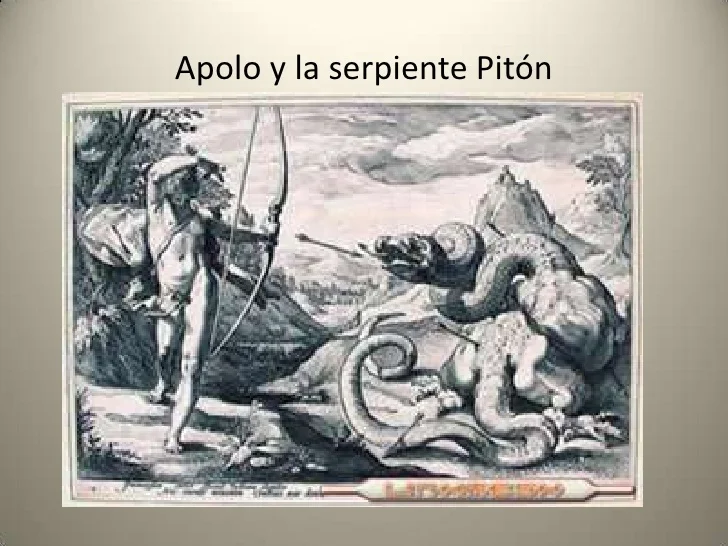
OBVIO NEXO DE LA SERPIENTE CON LA LUNA , OSEA EL SABADO LUNAR |
|
|
|
Rispondi |
Messaggio 70 di 81 di questo argomento |
|
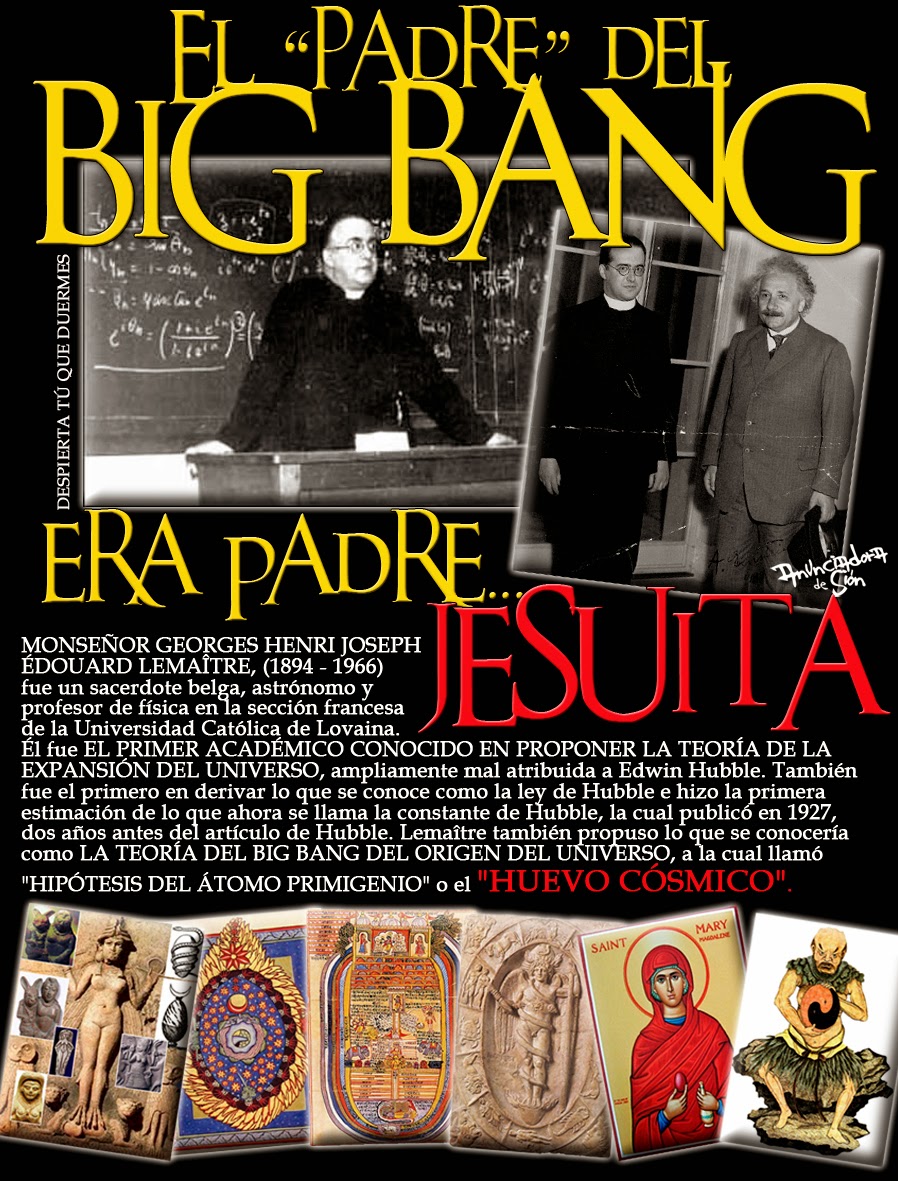 

11 DE SEPTIEMBRE O SEPTIEMBRE 11
11/9 O 9/11
Sapientia Aedificavit Sibi Domum. Es decir, "la sabiduría ha edificado aquí su casa". Resulta curioso que la misma frase aparece en el Evangelio de María Magdalena, un texto apócrifo. Se dice que en el interior de esta iglesia y de otras muchas de Venecia está escondido el tesoro de los templarios. Pero no hay ninguna prueba de ello. Para terminar ya con esta entrada me gustaría que nos acercásemos un momento a uno de los edificios más emblemáticos de Venecia: el Palacio Ducal.

La Maddalena

La Maddalena

Tomb of Tommaso Temanza
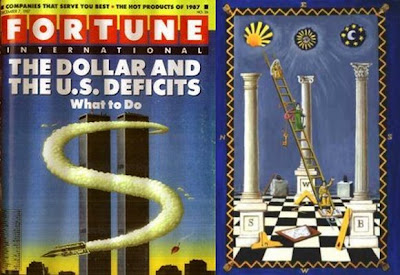
ISLA SAN GIORGIO (VENECIA)=GEORGE LEMAITRE
GEMATRIA EN INGLES DE SEED=33
GEMATRIA EN INGLES DE GATE=33
SARA (CE-SAREA DE FILIPO)=PARALELO 33
"¡Oh profundidad de las riquezas de la sabiduría (sophia)
y de la ciencia (gnwsiV, gnosis) de Dios!
¡Cuán incomprensibles son sus juicios, e inescrutables sus caminos!"
(Romanos, 11: 33).
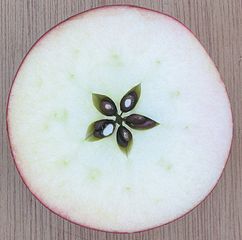 the Apple
| milky way in Simple Gematria Equals: 119 |
( |
m 13 |
i9 |
l 12 |
k 11 |
y 25 |
0 |
w 23 |
a1 |
y 25 |
) |
| queen mary in Simple Gematria Equals: 119 |
( |
q 17 |
u 21 |
e5 |
e5 |
n 14 |
0 |
m 13 |
a1 |
r 18 |
y 25 |
|
| hebrew calendar in Simple Gematria Equals: 119 |
( |
h8 |
e5 |
b2 |
r 18 |
e5 |
w 23 |
0 |
c3 |
a1 |
l 12 |
e5 |
n 14 |
d4 |
a1 |
r 18 |
| mary magdalene in Simple Gematria Equals: 119 |
( |
m 13 |
a1 |
r 18 |
y 25 |
0 |
m 13 |
a1 |
g7 |
d4 |
a1 |
l 12 |
e5 |
n 14 |
e5 |
|

|
|
|
|
Rispondi |
Messaggio 71 di 81 di questo argomento |
|
Location
Montségur is in the Ariege, in the foothills of the Pyrenees, not far from Lavelanet, due South from Mirepoix.
Montségur lies at 42°52'35" N, 1°49'51" E on a pog (a volcanic pluton) at an altitude of 1,207 meters. The castle is owned by the Commune of Montségur. There is an entrance fee, which also covers entry to a museum in the nearby town.
Guided Tours
Cathar Castle Tours
Mairie: mairie.montsegur@wanadoo.fr
Tel: 05 61 0110 27
Tourist Information Office:
Tel: 05 61 03 03 03

|
|
aerial view of Montségur
|
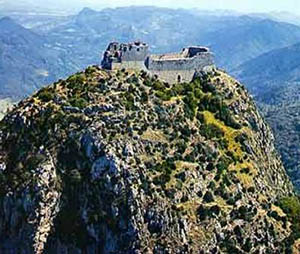 |
|
MARIA MAGDALENA EN EL CATARISMO (CATAROS)
25 DE ABRIL=DIA DE SAN MARCOS
22 DE JULIO=DIA DE MARIA LA MAGDALENA
|
|
|
|
Rispondi |
Messaggio 72 di 81 di questo argomento |
|
|
|
|
Rispondi |
Messaggio 73 di 81 di questo argomento |
|
|
|
|
Rispondi |
Messaggio 74 di 81 di questo argomento |
|
|
|
|
Rispondi |
Messaggio 75 di 81 di questo argomento |
|
|
|
|
Rispondi |
Messaggio 76 di 81 di questo argomento |
|
|
|
|
Rispondi |
Messaggio 77 di 81 di questo argomento |
|
Franciscan Chapel of Mary Magdalene (Holy Sepulchre)
On the north side of the Rotunda, the hall of the tomb, is the Franciscan Chapel of Mary Magdalene. Mary of Magdala (Migdal) accompanied Jesus on his way to the cross and burial.
Overview
This picture shows the pavement of the Chapel of Mary Magdalene, dedicated to the encounter between Mary Magdalene and Jesus. The pavement is a modern copy of the original floor from the 11th century. It consists of two circular sectors indicating the positions, at the time of their encounter, of Jesus, at the point encircled by rays, and Mary Magdalene, at the center of three circles.
Gallery
|
|
|
|
Rispondi |
Messaggio 78 di 81 di questo argomento |
|
ANKH=RENNE LE CHATEAU=MARIE MADELEINE=FRANCE
|
|
|
|
Rispondi |
Messaggio 79 di 81 di questo argomento |
|
|
|
|
Rispondi |
Messaggio 80 di 81 di questo argomento |
|
|
|
|
Rispondi |
Messaggio 81 di 81 di questo argomento |
|
Pope Francis sends Hanukkah greetings to international head of Progressive Jewry
Argentine Rabbi Sergio Bergman receives handwritten Spanish-language holiday note from countryman
Ahead of Hanukkah, Pope Francis sent a handwritten Hanukkah greeting to fellow Argentine religious leader, Rabbi Sergio Bergman. Bergman is the new president of the World Union of Progressive Judaism, which is a coalition of 1,200 Liberal Jewish congregations in 50 countries with 1.8 million members.
In the Spanish message, the pope blesses the Jewish community with “an existence illuminated by the Lord,” and asks the rabbi to pray for him “so that I always have the grace to walk in the light and not get lost in the darkness.”
The pope is the leader of the world’s two billion Roman Catholics. He and Bergman last celebrated Hanukkah together in 2012 at an interfaith celebration in Buenos Aires when the pope lit the hanukkiya (Hanukkah menorah).
Sheba #8 Hospital in the WorldKeep Watching
The letter will be read as part of WUPJ’s 2020 star-studded Hanukkah Gala on December 13. The following is an English translation provided by WUPJ.
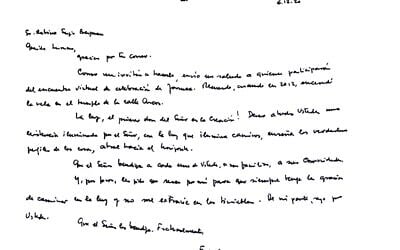
Hand-written letter from Pope Francis to Rabbi Sergio Bergman ahead of Hanukkah, December 2020. (courtesy)
Rabbi Sergio Bergman
Dear brother,
Thanks for your mail.
As you invite me to do it, I send a greeting to those who participate in the virtual
meeting to celebrate Hanukkah. I remember when in 2012 I lit the candle in the temple
on Arcos Street.
Light, the first gift of the Lord in Creation!
I wish all of you an existence illuminated by the Lord, with the light that unites paths,
teaches the true profiles of things, draws towards the horizon…
May the Lord bless each of you, your families, your communities.
And, please, I ask you to pray for me so that I always have the grace to walk in the light and not get lost in the darkness. For my part I pray for you.
May the Lord bless you, fraternally.
Franciscus.
https://www.timesofisrael.com/pope-francis-sends-hanukkah-greetings-to-international-head-of-progressive-jewry/ |
|
|
 Primo Primo
 Precedente
67 a 81 de 81
Successivo Precedente
67 a 81 de 81
Successivo
 Ultimo
Ultimo

|
|
| |
|
|
©2025 - Gabitos - Tutti i diritti riservati | |
|
|


